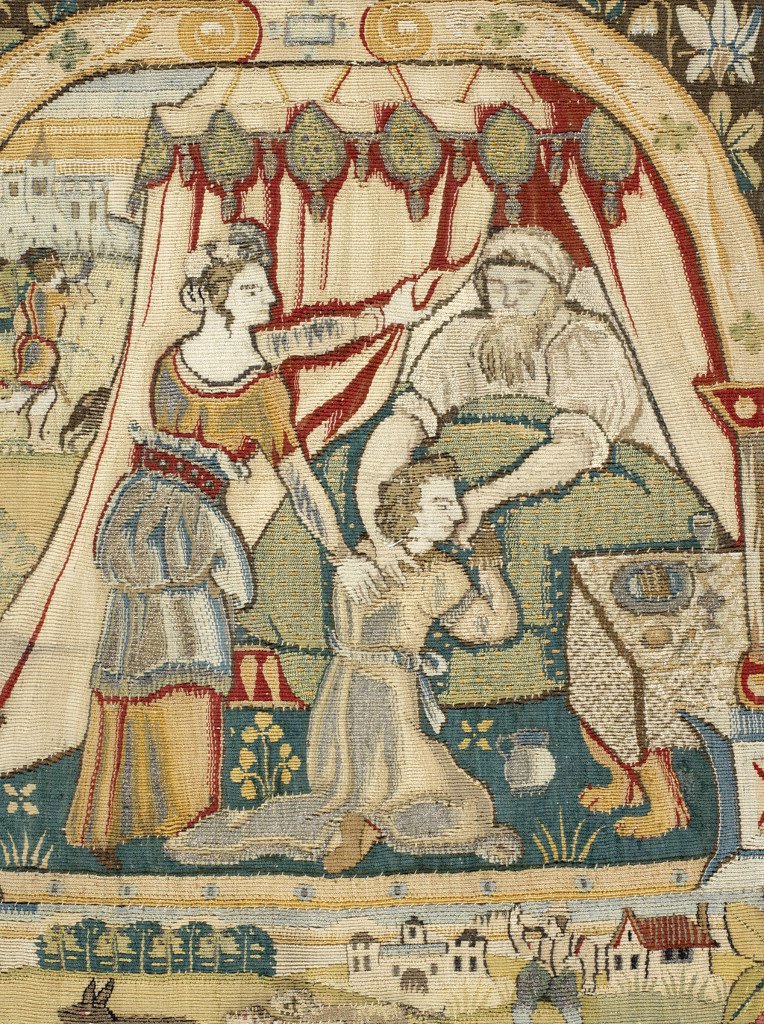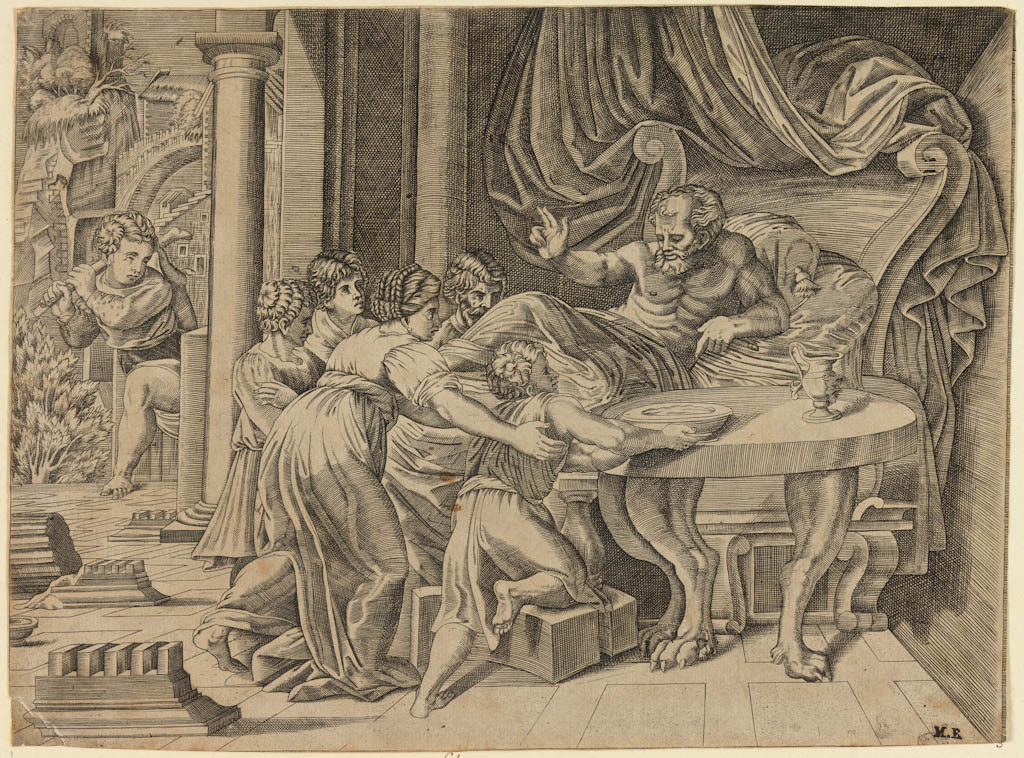The subject matter of a tapestry might be decided by the patron or it might be the choice of the master weaver. If the patron were a rich and powerful man – a king or courtier perhaps – an original theme or drawing might be commissioned. The Emperor Charles V chose to celebrate his conquest of the city of Tunis in twelve tapestries designed by an artist who had accompanied the campaign. Others, like the English King Henry VIII, asked a skilled draughtsman to illustrate a biblical or classical theme and employed a known master to produce it in tapestry. Henry VIII owned large tapestries showing Tobias and the Life of Abraham.
Tapestry, depicting the story of ‘Jacob and Esau’


Smaller workshops did not always have the resources to produce large sets or even individual large-size tapestries, and they were unlikely to be able to afford the cost of an original design. So the designs of smaller tapestry items often followed scenes or motifs produced by competent pattern drawers or draughtsmen, and took inspiration from popular engravings and prints, which were relatively cheap to buy




